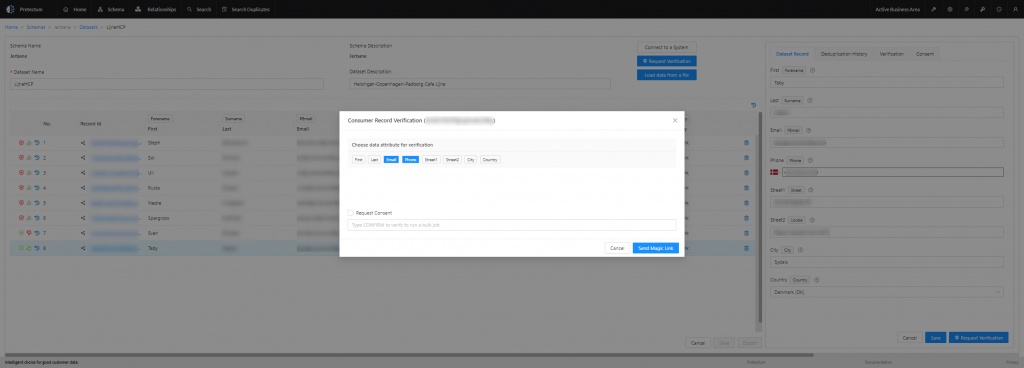Stepping Up Your D2C Game: How Intelligent MDM Fuels Footwear & Apparel Success
Footwear and apparel manufacturers, exemplified by Nike, have become dominant players in the Direct-to-Consumer (DTC) market by fundamentally reshaping their business models to deepen consumer connections and improve profitability.
Nike’s Consumer Direct Offense, launched in 2017, and marked a strategic pivot from wholesale-heavy distribution toward a digitally led, personalized, and integrated D2C approach. This strategy emphasizes direct engagement through digital platforms, membership programs, and innovative retail experiences, enabling Nike to control brand presentation, gather rich consumer data, and boost profit margins by cutting out intermediaries.
By 2021, Nike had nearly doubled its direct sales share compared to 2011, with DTC accounting for over 40% of revenue and driving significant growth even during the pandemic. Challenges with inventory buildup aside, there were consumer demand fluctuations which prompted Nike to recalibrate, reengaging selectively with wholesale partners to balance reach and control.
Such an evolution highlights how leading footwear and apparel brands leverage DTC not only to enhance customer experience through personalization and innovation but also to maintain competitive advantage in the evolving digital retail landscape.
Beyond the trendy
Ongoing success hinges on more than just trendy designs and seamless e-commerce. It’s about truly knowing your customer – understanding their preferences, anticipating their needs, and delivering personalized experiences that build lasting loyalty. This is where a robust Customer Master Data Management (MDM) solution, like the Pretectum platform, becomes not just an asset, but a fundamental pillar for growth.
For D2C footwear and apparel brands, the customer journey is multifaceted, consumers may browse sneakers, purchase seasonal outfits, visit physical stores but order online. Every interaction presents as an opportunity to generate valuable data. However, this data often resides in disparate systems: e-commerce platforms, marketing automation tools, loyalty programs, customer service desks, and even in-store POS. The result? Fragmented customer views, inconsistent messaging, and missed opportunities.
The Pretectum Customer MDM solution directly addresses these challenges, offering a flexible SaaS platform designed to centralize, enrich, and activate your most valuable asset: your customer data. Pretectum can empower D2C footwear and apparel businesses to achieve their overall goals and aims.

Building a Unified Customer View
As a foundation of D2C Excellence, at its core, the Pretectum platform enables all sizes of footwear and apparel brands to construct a comprehensive, single source of truth for each and every customer profile. Imagine having all understanding of customer interactions, purchase history, style preferences, size information, and even their preferred communication channels consolidated into one readily accessible profile.
The platform’s ability to define one or more data models, drawing data from diverse sources, is critical here. For a D2C footwear and apparel business, this could mean integrating E-commerce data with purchase history aggregations, Browse behavior summaries and abandoned cart info, product views; Marketing automation data with email opens, click-through rates, campaign engagement. Customer service interactions through support tickets, chat logs, resolution history can all be brought to a central unified record in Pretectum CMDM, and loyalty program data where points accrue, redemption history is summarised and membership tiers are referenceable.
When all this data is combined with data enrichment sets, you have customer data models can be enhanced with strong data typing and validations, ensuring the integrity and accuracy of your customer information. This means no more grappling with inconsistent sizing data or misspelled names, which directly impacts the efficiency of your operations and the effectiveness of your customer outreach.

Precision Personalization and Hyper-Targeted Marketing
With a single customer view, D2C brands can move beyond generic marketing to deliver truly personalized experiences. The Pretectum platform’s flexible and configurable data tagging functionality, which doubles as a business glossary, can be a game-changer.
Consider a customer who frequently purchases running shoes and activewear. By making use of additional tags at the customer profile level with tags like “runner,” “athletic wear,” and specific shoe sizes, your marketing team has the potential to Segment with precision, and Create highly targeted campaigns for new running shoe releases or performance apparel; Personalize recommendations – in suggesting complementary products based on past purchases or Browse behavior (e.g., matching socks with shoes, or a specific top with bottoms) and Tailor messaging by sending personalized emails about upcoming races or fitness challenges, rather than generic promotions.
The use of AI prompts to accelerate tag creation further streamlines this process, allowing brands to quickly build a rich and focused tagging taxonomy without manual effort. This empowers marketers to focus on strategy and creativity, rather than tedious data entry.
Streamlined Operations and Enhanced Data Quality
The challenges of managing vast amounts of customer data can be overwhelming. The Pretectum platform offers various methods for data ingestion, ensuring flexibility while maintaining data quality. For new customer sign-ups or small-scale additions, manual entry with real-time validation prevents bad data from ever entering the system. This is crucial for maintaining a clean and reliable customer database.
For bulk data migration or ongoing integrations, lightweight ETL processes with Excel-like syntax enable data transformation at the attribute level during ingestion. This means data from disparate sources can be harmonized and standardized, even if it arrives in different formats. Critically, data is accepted and flagged as matching validation or not, providing immediate insights into data quality issues without blocking the ingestion process.
Furthermore, the automatic PII masking for sensitive data is a critical security feature for D2C businesses. Protecting customer privacy builds trust and ensures compliance with data protection regulations. A robust permission matrix (RBAC) and audit logs provide comprehensive control and accountability over data access and unmasking.

Empowering the Customer: Self-Service Data Validation & Consent
It seems almost every week new legislation appears in the data management environment, imposing new obligations and responsibilities at a local, regional, national and even international level. The easiest way to meet them head-on is to empower customers to manage their own data. The Pretectum platform’s self-service data validation and consent granting feature is a powerful tool for D2C brands.
Imagine a customer who wants to update their shipping address, change their preferred sizing, or even review and consent to the data held about them and have those changes permeate all systems of record. Such a feature allows consumers to receive a one-time use email with a secure hyperlink, enabling them to edit, redact, and self-consent their data. This not only enhances customer trust and transparency but also reduces the burden on customer service teams, allowing them to focus on more complex inquiries. The audit log diligently records all such events, providing a clear trail of customer interactions.

Unlocking Insights: Duplicate Matching and Survivorship Rules
For D2C footwear and apparel brands, duplicate customer records don’t have to be a common headache. Unmanaged, they lead to inaccurate reporting, wasted marketing spend, and inconsistent customer experiences. The Pretectum platform’s batch-based duplicate matching process is an invaluable asset in reducing that waste.
This capability allows brands to identify commonalities across records, even spanning multiple business areas and datasets, based on associated tags and underlying data values. The creation of “matchsets” then allows a user to nominate a “survivor” record within each set. A second batch process, guided by configurable survivorship rules, can then merge or purge records to the survivor.
This ensures a clean, accurate, and consolidated view of each customer, eliminating redundancies and maximizing the effectiveness of your data-driven initiatives. For example, if a customer creates two accounts with slightly different email addresses, the platform can identify them as the same individual, ensuring all their purchase history and preferences are attributed to a single profile.

The Power of AI-Powered Elastic Search: Natural Language Queries
Finally, the AI-powered elastic search functionality revolutionizes how D2C teams interact with their customer data. Instead of requiring users to master complex search syntaxes, natural language questions generate elastic search queries.
For a footwear and apparel brand, this means a marketing manager can simply ask, “Show me all women customers in California who purchased running shoes in the last six months and have a loyalty tier of gold.” The system, using scoped business areas, schemas, and tags as context, translates this into a precise search, delivering immediate and relevant results.
This intuitive search capability empowers various teams – from marketing and sales to customer service and product development – to quickly access the specific customer insights they need. The ability to scope searches to specific datasets or span the entire system, according to user permissions, provides both flexibility and control.

Conclusion: Stepping Forward with Intelligent MDM
For D2C footwear and apparel businesses, the Pretectum Customer MDM solution is more than just a data management tool; it’s a strategic enabler. By providing a unified, accurate, and accessible view of your customer, it empowers brands to Enhance customer experience, and deliver personalized journeys that foster loyalty and advocacy. Optimize marketing efforts, and Drive higher engagement and conversion rates through hyper-targeted campaigns. Improve operational efficiency, and streamline data processes, reduce errors, and free up valuable resources. Ensure data governance and compliance:, and thereby protect customer privacy and maintain regulatory adherence. Unlock actionable insights thereby making data-driven decisions that fuel growth and innovation.
In the D2C landscape, truly understanding and serving your customer is the ultimate differentiator. With an intelligent Customer MDM solution like Pretectum CMDM, footwear and apparel brands can step confidently into the future, building stronger customer relationships and achieving sustainable success.
Contact us to learn more #LoyaltyIsUpForGrabs.


